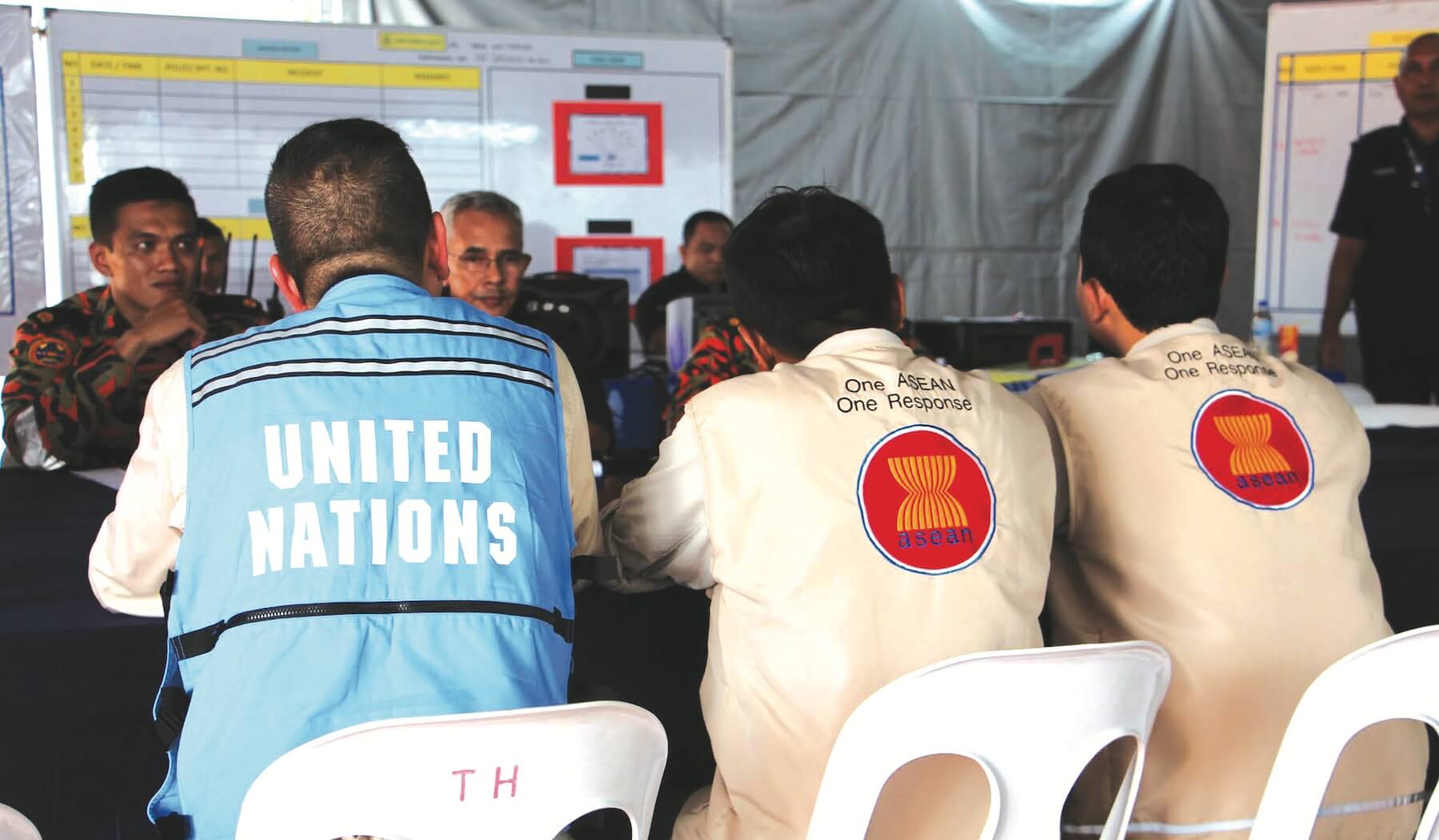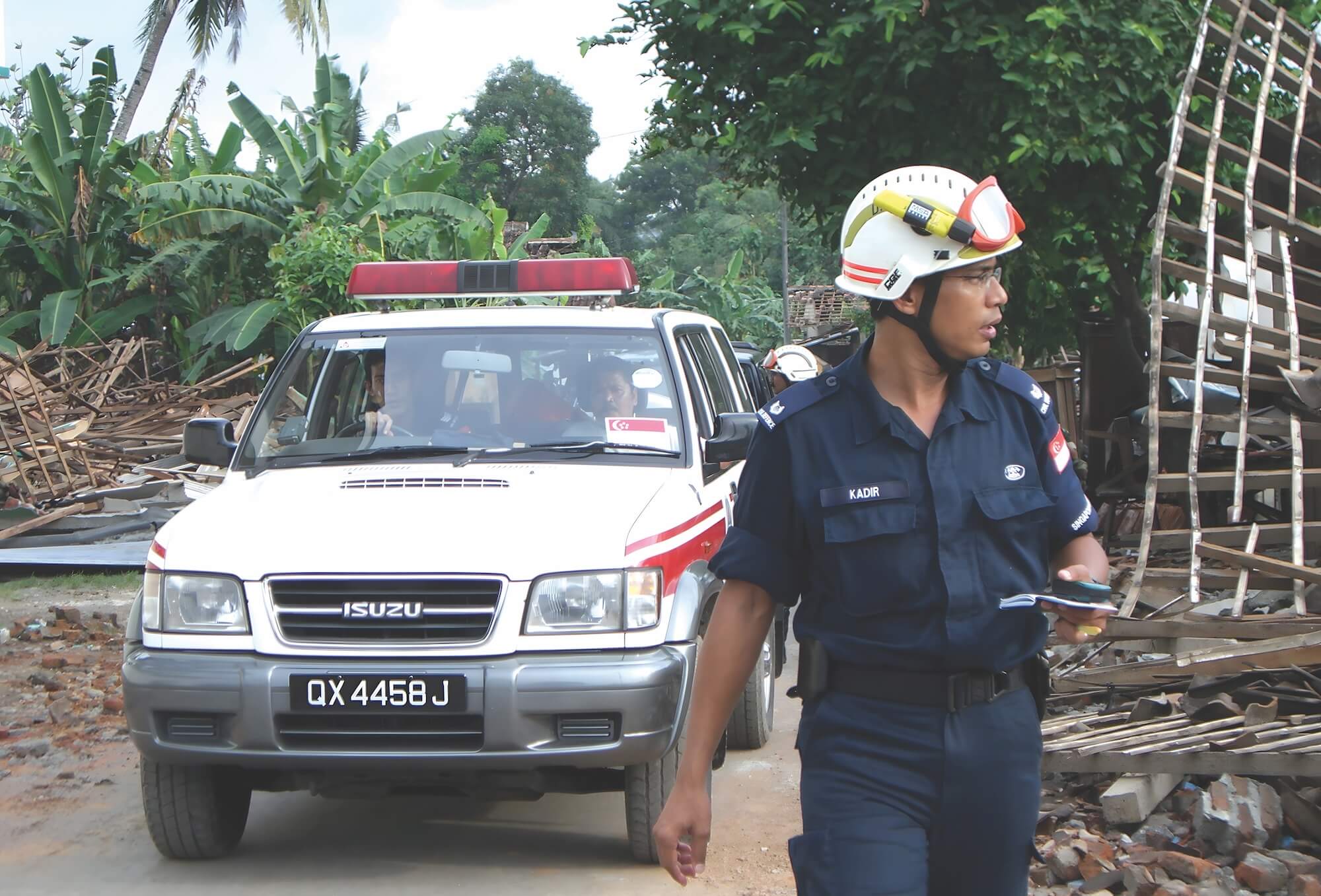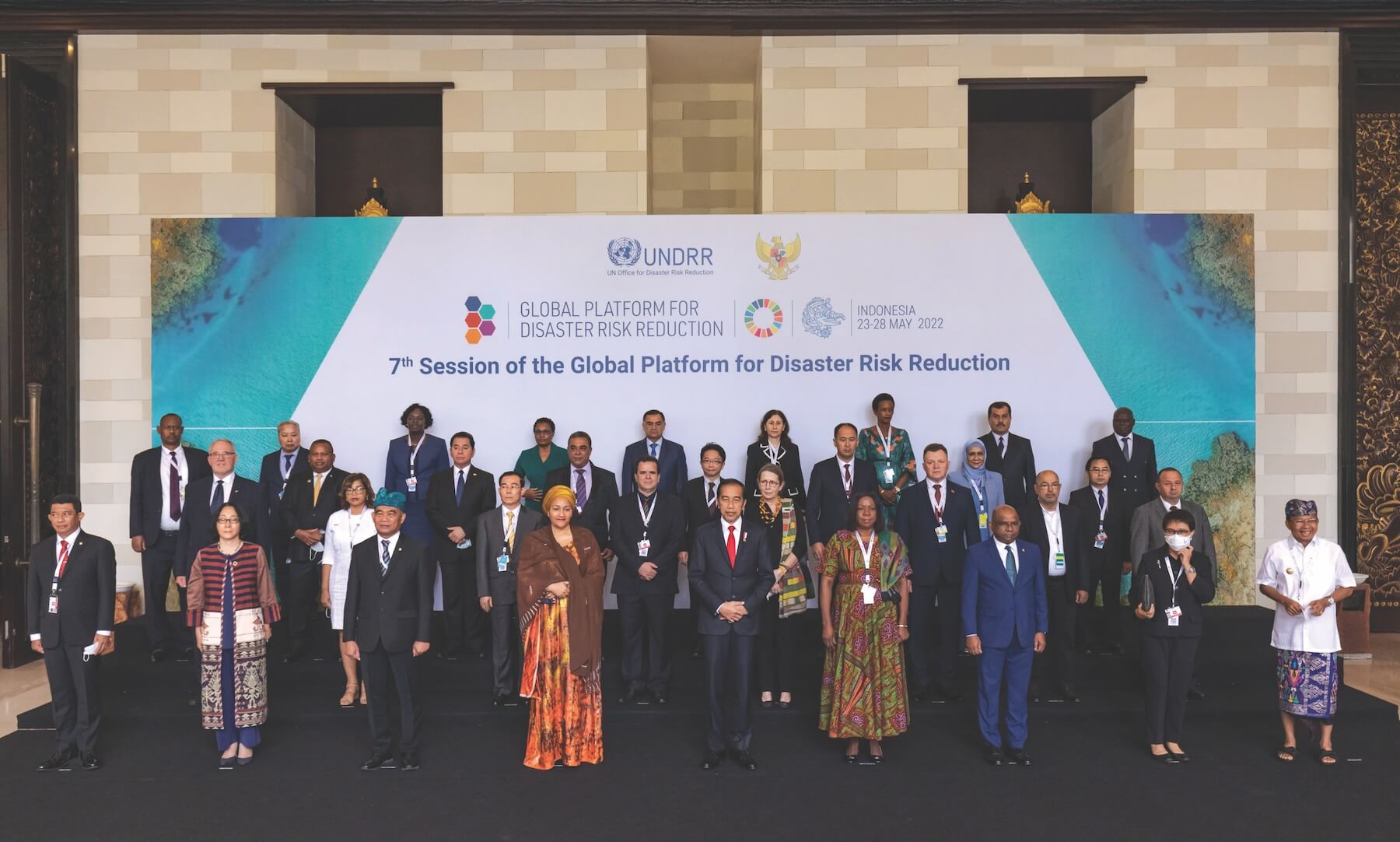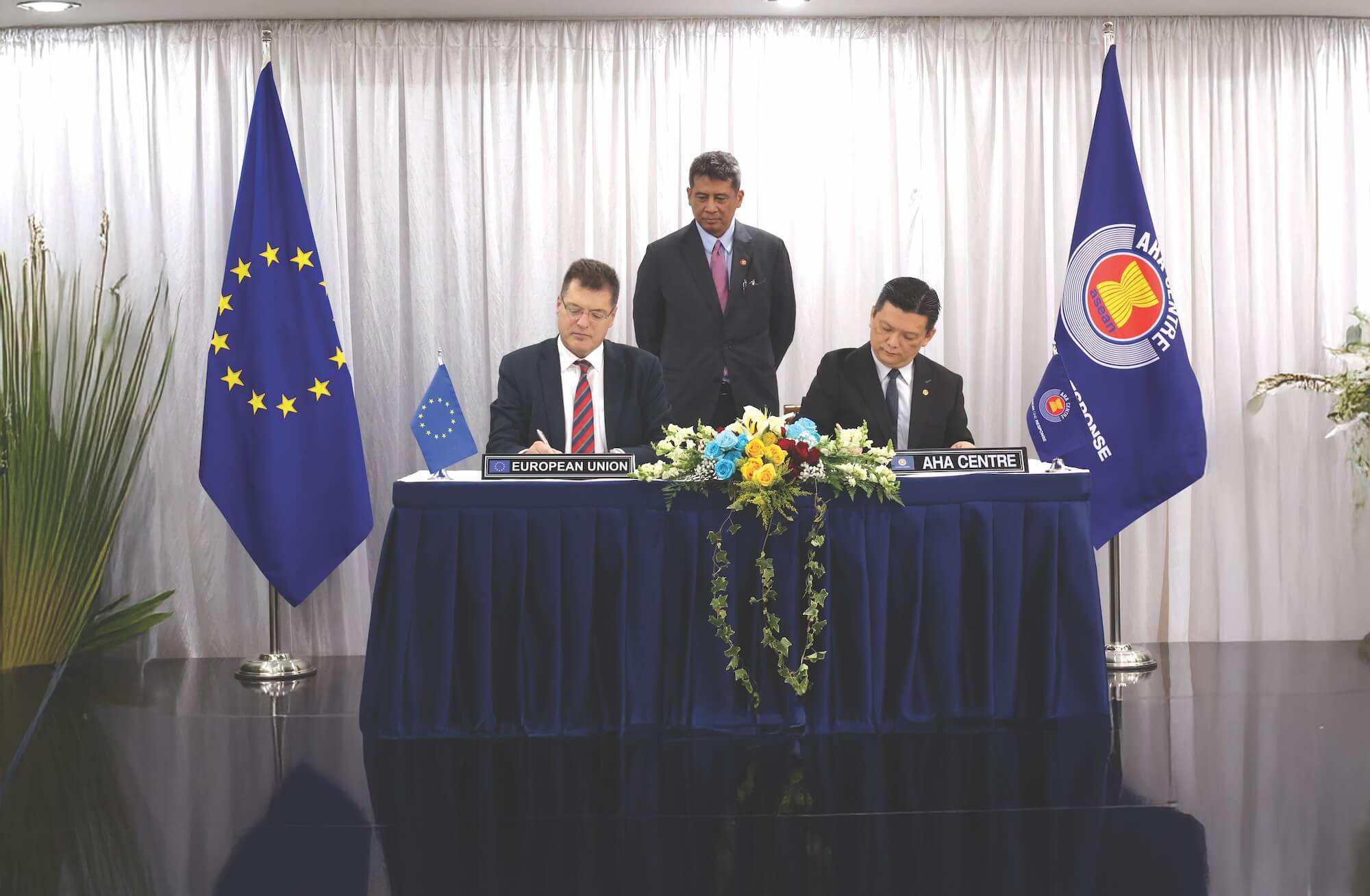



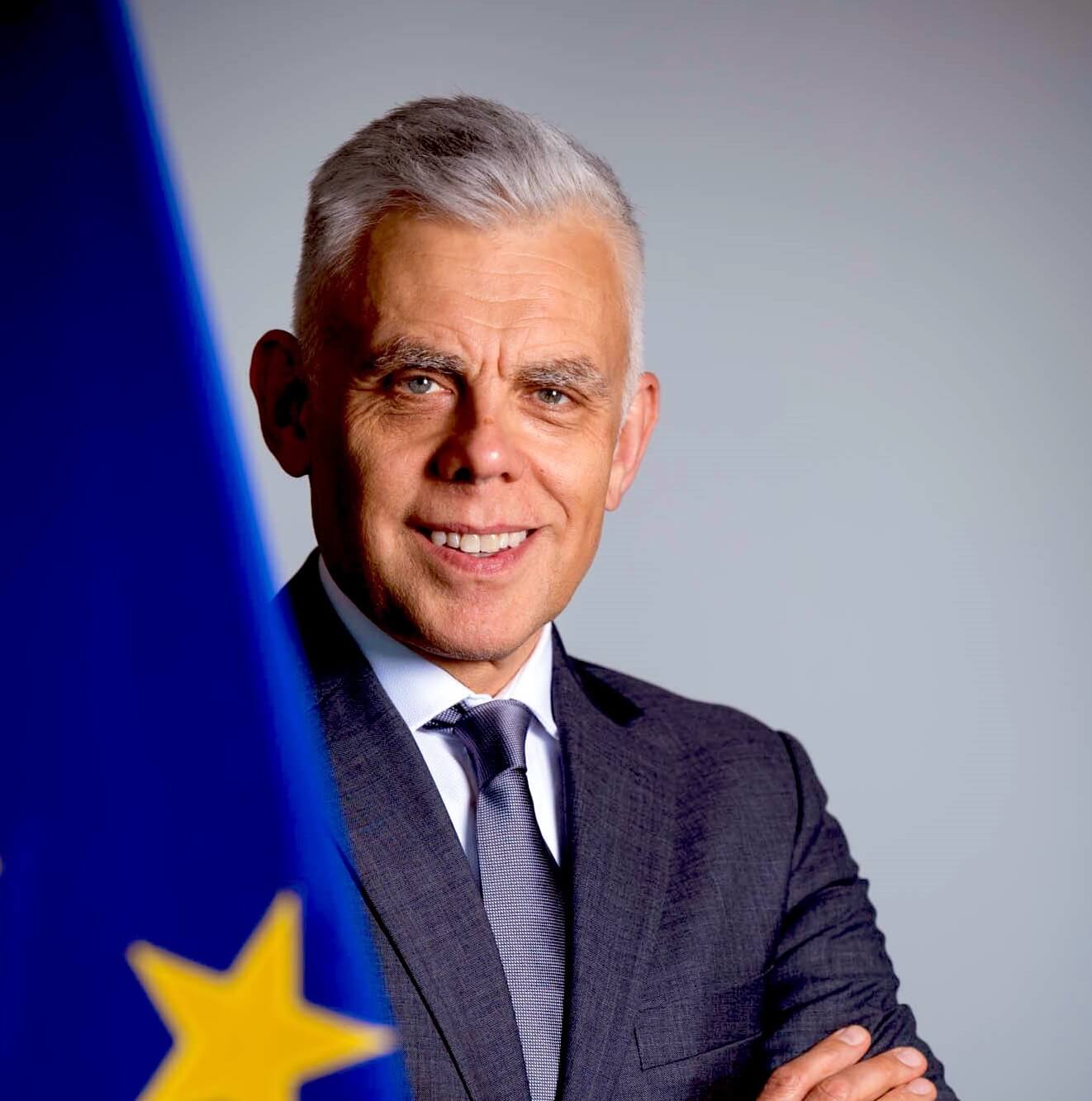

In September 2024, Typhoon Yagi tore through Southeast Asia, leaving devastation in its wake—claiming lives, displacing communities, and destroying livelihoods. At the same time, over 10,000 kilometres away, in the south of Europe, Portugal was battling raging wildfires that scorched vast areas and triggered evacuations.
These seemingly distant events are united by a common thread: From typhoons and floods to earthquakes and wildfires, both the EU and ASEAN regions are facing a growing array of hazards. Intensified by climate change, disasters are becoming more frequent, more severe, and more unpredictable. No country or region is immune—highlighting the urgent need for partnerships to strengthen collective resilience.
It is in this spirit of coordinated, forward-looking disaster risk management that we mark a significant milestone on 24 October 2025: the first anniversary of the Administrative Arrangement between the ASEAN Coordinating Centre for Humanitarian Assistance on disaster management (AHA Centre) and the European Commission Directorate-General for Civil Protection and Humanitarian Aid Operations (DG ECHO).
“This partnership goes far beyond a formal agreement,” said Maciej Popowski, Director General of EU Civil Protection and Humanitarian Aid Operations. “It represents a shared vision of building resilient communities, enhancing disaster preparedness, and promoting coordination in the response to disasters in the spirit of the Sendai Framework for Disaster Risk Reduction.”
A year of progress amid growing risks
Over the past year, the Administrative Arrangement has translated commitments into tangible actions. One of the most notable examples was the response to the devastating 7.7 magnitude earthquake in Myanmar on 28 March 2025. The European Union made available 13 million Euros in humanitarian aid to provide emergency shelter, medical care, clean water, and sanitation to people affected by the quake. It also transported over 1,000 metric tons (MT) of relief items through Humanitarian Air Bridge flights. The response was closely coordinated with the AHA Centre, exchanging information on the identified needs in the earthquake area and the delivery of relief items. Simultaneously, the EU activated the Copernicus Emergency Management Service, delivering and sharing satellite-generated geo-spatial information to inform the response.
The finalisation of the Administrative Arrangement Action Plan paved the way for impactful initiatives, including expert exchanges, joint trainings, technical workshops, and strengthened policy dialogues between ASEAN and EU experts. These efforts not only enhance institutional capacities but also foster trust and a deeper understanding between the two regions. ASEAN disaster management professionals are gaining access to international standards, recognised certifications, and transferable skills— strengthening the region’s operational readiness and capacity to respond effectively to crises.
In 2025, for example, DG ECHO and the AHA Centre are cooperating to organise workshops on humanitarian logistics for ASEAN Member States, covering key topics such as customs clearance and the import of humanitarian aid. The first session took place in Bangkok in January, followed by a second in Kuala Lumpur in September. While primarily addressing logistical challenges related to the AHA Centre’s operations, these workshops will also facilitate the import of humanitarian aid for the wider humanitarian community.
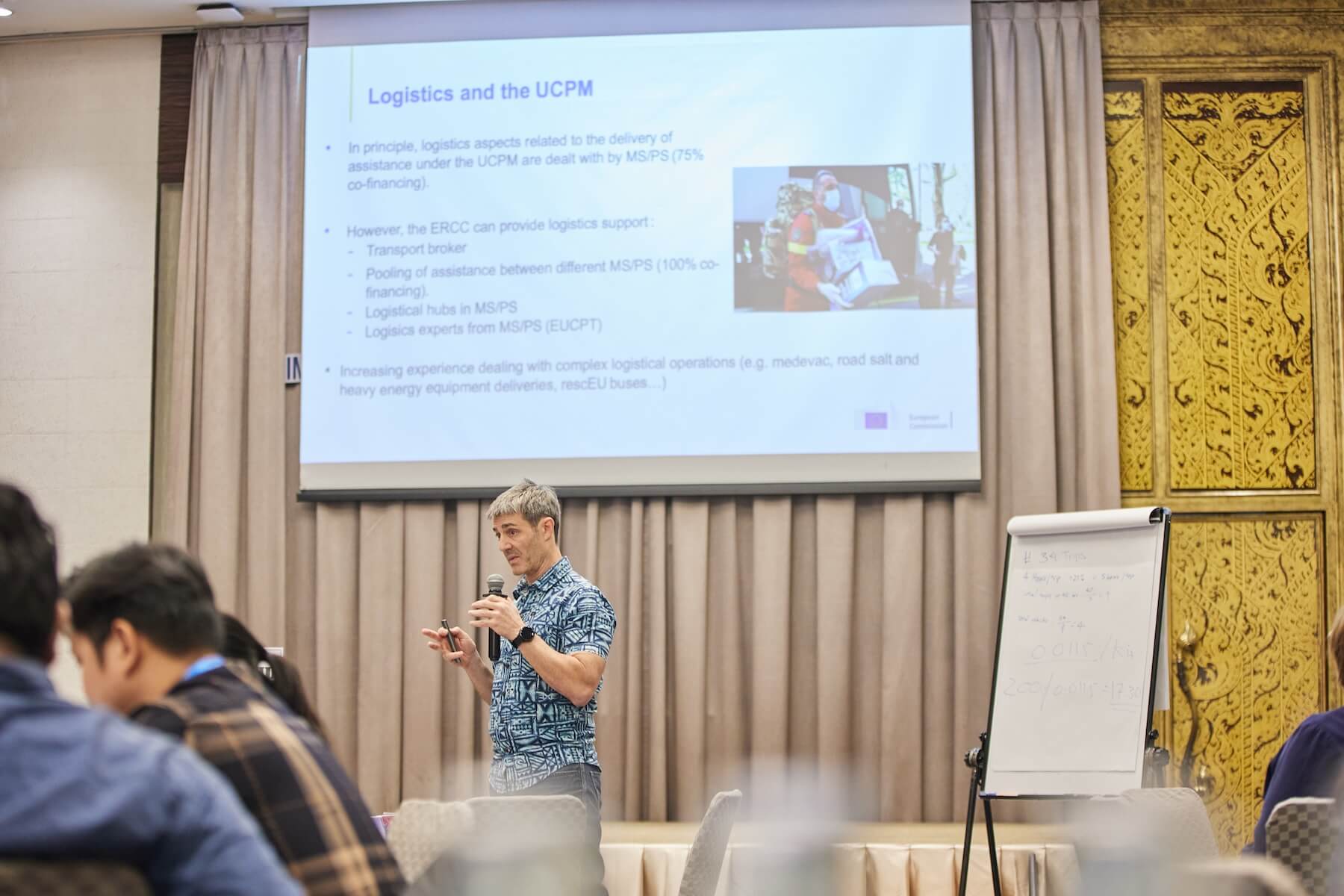
A longstanding partnership
Since becoming Dialogue Partners in 1977 and elevating to Strategic Partners in December 2020, the EU and ASEAN have steadily deepened their political, security, and economic collaboration grounded in a shared commitment to multilateralism and a rules‑based global order.
The 2004 Indian Ocean tsunami was one of the deadliest natural disasters in recorded history. The scale of devastation prompted an unparalleled international response. The European Union was the very first institutional donor to respond, and with a total contribution of 1.5 billion Euros, also the largest. This tragic event marked a major turning point in humanitarian response efforts, reshaping how the international community addresses emergencies and highlighting the critical importance of disaster preparedness. In its aftermath, the EU began exploring more structured cooperation with ASEAN in disaster risk reduction and response.
Responding to the urgent need for coordinated action, the ASEAN Agreement on Disaster Management and Emergency Response (AADMER) was signed in 2005 and entered into force in 2009. AADMER laid the foundation for the establishment of the AHA Centre in November 2011. Over time, the cooperation with the EU’s Emergency Response Coordination Centre (ERCC) expanded, from early technical exchanges to the launch of the European Union’s Integrated Programme in Enhancing the Capacity of AHA Centre and ASEAN Emergency Response Mechanisms (EU‑SAHA) in 2020.
“As a longstanding and committed partners, the EU has contributed to the Centre’s governance, strategic planning, and capacity building,” said Sujiro Seam, EU Ambassador to ASEAN. “This support has helped reinforce the AHA Centre’s role as ASEAN’s regional hub for disaster management knowledge and coordination. Notably, EU contributions have enhanced key preparedness tools, such as scenario-based decision-making frameworks and emergency response.”
The signing of the Administrative Agreement in 2024 marked a new and pivotal step, deepening ASEAN–EU emergency response coordination and mutual learning in disaster risk management coordination.
Preparedness at the core of EU-ASEAN engagement
The European Union has long prioritised disaster preparedness and risk reduction, both within its borders and globally. As disasters intensify and climate change exacerbates the risks, the need for resilient systems has never been greater. The EU currently dedicates approximately 80 million Euros annually to disaster preparedness worldwide, including in the ASEAN region.
In 2025, the EU adopted a comprehensive Preparedness Strategy, outlining a whole-of-society approach to crisis management that spans all sectors and levels of governance. This strategy is in line with the ongoing work with ASEAN.
In Southeast Asia, the EU’s engagement in this field spans three decades. Since 1995, the EU has collaborated with the United Nations, international NGOs, and local partners to strengthen disaster preparedness. These efforts have yielded tangible results, such as the piloting of innovative approaches, such as Anticipatory Action and Shock Responsive Social Protection. EU-backed projects have played a critical role in the development of frameworks to address imminent disasters.
In Cambodia, EU support enabled the provision of nationwide flood alerts to vulnerable communities. In the Philippines, the MOVE UP initiative enhanced disaster preparedness in urban areas, focusing on improved temporary shelter and resilient livelihood strategies.
At the same time, the EU Copernicus Programme in the Philippines (CopPhil) and the EU-ASEAN Sustainable Connectivity Package (SCOPE) Digital programme aim to integrate Copernicus data to tackle pressing regional challenges like disaster response, climate change adaptation, and environmental protection, offering practical solutions that benefit the entire ASEAN Community.
This cooperation aligns with the EU Global Gateway strategy, which promotes smart, clean, and secure connections, with disaster risk management as a key sector to tackle global climate and sustainability challenges.
The 2024 Administrative Arrangement has helped consolidate EU-funded initiatives under a more coordinated framework— expanding reach, boosting efficiency, and increasing impact.
Looking ahead: Building resilience together
Looking to the future, the EU remains committed to supporting ASEAN’s disaster management priorities, including the development of the AADMER Work Programme 2026–2030, which will shape the region’s disaster management in the years to come. The EU’s continued engagement will be key in addressing critical challenges such as building uniform capacities across ASEAN countries, embedding preparedness tools into national agencies, and transitioning from response to prevention, resilience planning, and climate mitigation.
Through the collaboration between DG ECHO and the AHA Centre, supported by the EU-SAHA Programme, ASEAN and the EU have forged an alliance based on shared values and mutual learning. As climate-induced risks continue to rise, it is vital to build on this strong foundation by enhancing data sharing, scaling up capacity-building, engaging communities, and exploring financial innovations. “Our partnership with the European Union demonstrates how shared commitment and collective action can significantly strengthen ASEAN’s capacity to respond to disasters. Not only enhancing preparedness and coordination but also ensuring that no community in our region is left behind when crises strike,” said Executive Director of the AHA Centre, Mr Lee Yam Ming.
With continued European partnership and ASEAN’s leadership in regional coordination, we will work towards a shared goal: a safer, more resilient future for both regions.
Together, we are turning challenges into opportunities and transforming lessons into action. We look forward to many more years of impactful cooperation.




